AI: Meta expands Humanoid AI robots race. RTZ #633
...joins Tesla/xAI, OpenAI, Nvidia, Google and others in US and global 'AI Mobility' race
From the earliest days of this newsletter, I’ve been discussing the nascent, but ramping opportunity of applying LLM AI technologies to robotics. Reviving the long existing investment efforts globally around robots and robotics, both for industrial and consumer robotic applications in the home and physical world. The last two years in particular, have seen a resurgent interest, and reinvention of robotics with AI technologies, both in the US and aggressively in China, as I’ve discussed.
Elon Musk has gotten the most amount of media attention in the US with his Tesla/xAI/SpaceX Optimus line of robots, with Google, OpenAI, Nvidia, Amazon, Apple, Boston Dynamics, and many other robotics startups ramping up as well. Particularly in ‘humanoid’ robots. Now Meta is joining this multi-billion, multi year effort, with a vigorous effort, which likely accelerates the space for humanoid robots in particular. Apple is apparently in the fray as well. That is the Bigger Picture I’d like to discuss this Sunday.
Bloomberg provides the relevant context in “Meta Plans Major Investment Into AI-Powered Humanoid Robots”:
“Company is aiming to be the engine powering humanoid market”
“Ex-Cruise CEO Marc Whitten to run new group in Reality Labs”
It’s the Reality Labs that’s been the tip of the arrow in Meta’s $50 billion+ investments in the metaverse, and recently in AI powered AR and Smart Glasses I’ve also discussed in detail. Bloomberg continues:
“Meta Platforms Inc., after pushing into augmented reality and artificial intelligence, has identified its next big bet: AI-powered humanoid robots.
“The company is making a significant investment into the category — futuristic robots that can act like humans and assist with physical tasks — and is forming a new team within its Reality Labs hardware division to conduct the work, according to people with knowledge of the matter.”
“Meta plans to work on its own humanoid robot hardware, with an initial focus on household chores. Its bigger ambition is to make the underlying AI, sensors and software for robots that will be manufactured and sold by a range of companies, said the people, who asked not to be identified because the initiative hasn’t been announced.”
The plans seem to emcompass both robotics hardware and software, potentially with and for other AI robotics companies:
“Meta has started discussing its plan with robotics companies, including Unitree Robotics and Figure AI Inc. At least initially, it doesn’t plan to build a Meta-branded robot — something that could directly rival Tesla Inc.’s Optimus — but it may consider doing so in the future, the people added.”
“The humanoid effort mirrors exploratory projects at other technology giants, including Apple Inc. and Alphabet Inc.’s Google Deepmind division. A Meta spokesperson declined to comment.”
Not to mention Nvidia, which has a wide and deep program for AI robotics.
And for Meta, it starts with a senior hire to head the effort:
“Meta confirmed the creation of the new team to employees Friday, telling them it will be led by Marc Whitten, who resigned as chief executive officer of General Motors Co.’s Cruise self-driving car division earlier this month. He was previously an executive at gaming company Unity Software Inc. and Amazon.com Inc.”
“The core technologies we’ve already invested in and built across Reality Labs and AI are complementary to developing the advancements needed for robotics,” Andrew Bosworth, Meta’s chief technology officer, wrote in a memo reviewed by Bloomberg News. He mentioned the company’s advancements in hand tracking, computing at low bandwidth and always-on sensors.”
Meta’s goal seems to extend its AI software advantages into this emerging market for AI in the physical world:
“Meta executives believe that while humanoid robotics companies have made headway in hardware, Meta’s advances in artificial intelligence and data collected from augmented and virtual reality devices could accelerate progress in the nascent industry. Current humanoids are still not useful enough to fold clothes, carry a glass of water, place dishes in a rack for cleaning or conduct other home chores that could get consumers interested in the category.”
Meta of course is planning on leveraging its hardware/software successes at retail with its Ray-Ban branded Meta smart glasses, which have over two million units sold, with ambitions to expand much larger.
“We believe that expanding our portfolio to invest in this field will only accrue value to Meta AI and our mixed and augmented reality programs,” Bosworth wrote. Whitten, who will report to Bosworth, will have headcount to hire around 100 engineers this year, one of the people said.”
And of course, like other major tech companies like OpenAI, Apple, Google and others, the aspiration is to provide the software ‘operating system’ for general purpose and specialized human robotic platforms:
“Meta’s goal is to provide what Google’s Android operating system and Qualcomm Inc.’s chips did for the phone industry by building a foundation for the rest of the market.”
“The software, sensors and computing packages that Meta is already developing for its devices are the same technologies that are needed to power humanoids, according to one of the people involved in the project.”
And the budget is large and expanding:
“Meta has been investing billions of dollars for years into its Reality Labs hardware division, which sells products like the Quest VR headset and the increasingly popular Ray-Ban smart glasses. Meta plans to spend $65 billion this year on related products, including artificial intelligence infrastructure and the new robot work.”
The current company with the most media attention in humanoid robotics in the US is of course Elon Musk’s Tesla/xAI set of companies with Optimus:
“Tesla Inc. CEO Elon Musk has said that his company’s Optimus robot will eventually be sold to consumers and could cost around $30,000. Tesla is beginning limited production this year. Other businesses also have made headway. Boston Dynamics, for instance, has already brought products to market for automation in warehouses. Some companies are focused on selling to businesses and manufacturers, while Meta’s intention is to sell into homes.”
AI robot startups like Unitree are offering early humanoid robots at $16000+ price points, with growing capabilities. As with self driving cars, prices can go beyond $90,000 depending on options.
All this work at a high level, is of course tied at the hip to the hard work underway in AI powered self driving vehicles:
“Humanoids are an evolution of the work companies have been doing in autonomous vehicles. They use similar underlying technologies and require large amounts of data and AI processing. But while the safety stakes are lower — roaming a person’s home instead of traveling 50 miles per hour on an open road — Meta executives believe humanoids are more challenging because every person’s home has a different layout, while city streets are fairly standardized.”
Meta is planning a wider development framework for its efforts here, with ambitious hiring efforts in the space:
“Meta will build some of its own hardware, use off-the-shelf components and work with existing manufacturers as soon as it can, said the people with knowledge of the project. They added that building prototypes and hardware is key for testing ahead of deploying a platform, even if Meta itself doesn’t ultimately release a branded product.”
“The company is pitching its work as the platform of choice for robot development, one of the people said, adding that the goal was to make Meta’s Llama software a foundation for robotics researchers around the world.”
“Meta will also seek to develop tools for robot safety, addressing possible dangers such as a person’s hand getting caught in an actuator or another part of a humanoid robot. There are also issues related to power safety, such as how a robot powers down or stops functioning mid-task if it runs out of power.”
The timeline expectations being discussed may be a tad aggressive, but ambitous:
“One person with knowledge of the project said that Meta believes humanoids are still a couple of years away from being widely available — and it could be years before the company’s platform is ready to underpin third-party products. But it will become a major focus for Meta and the broader tech industry, the person said.”
There are other takes on Meta’s robotic ambitions, as well as their recent senior hire to expand the retail distribution for smart glasses, and presumably humanoid robots whenever they’re ready.
But the bottom line is that Meta has put their significant AI assets in the ring for humanoid robot expansion, along the ramping investments by big tech and well funded AI startups in the industry.
While they all face robust and accelerating competition from China, particularly given their headstart in wide and deep manufacturing ecosystems for robots, autos/EVS, drones, and other AI ‘Mobility’ driven devices. This time in the physical world.
And that’s an updated Bigger Picture to keep in mind in this AI Tech Wave. Stay tuned.
(NOTE: The discussions here are for information purposes only, and not meant as investment advice at any time. Thanks for joining us here)


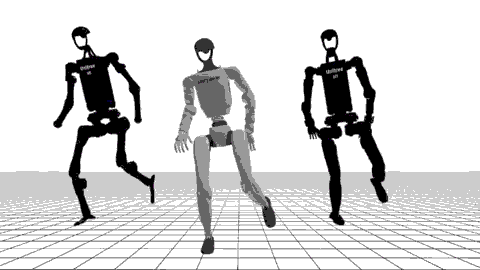
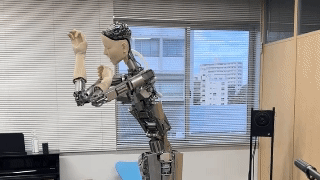

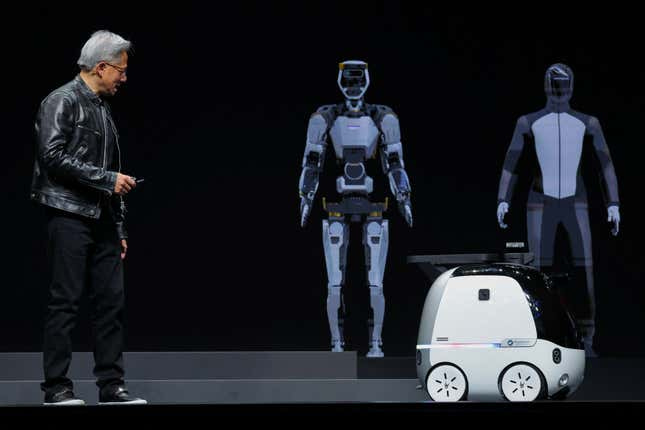
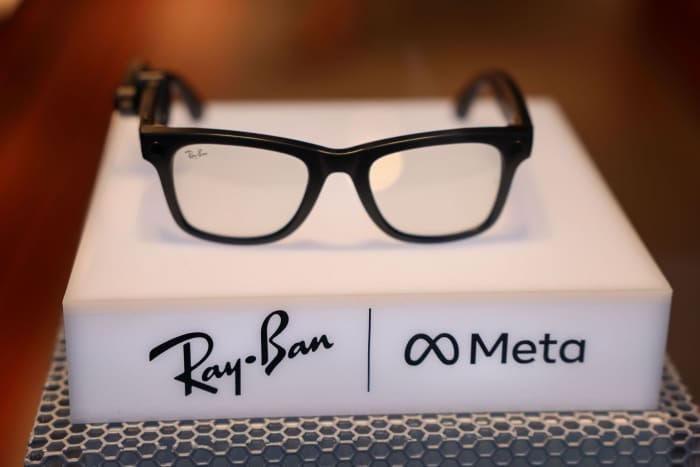
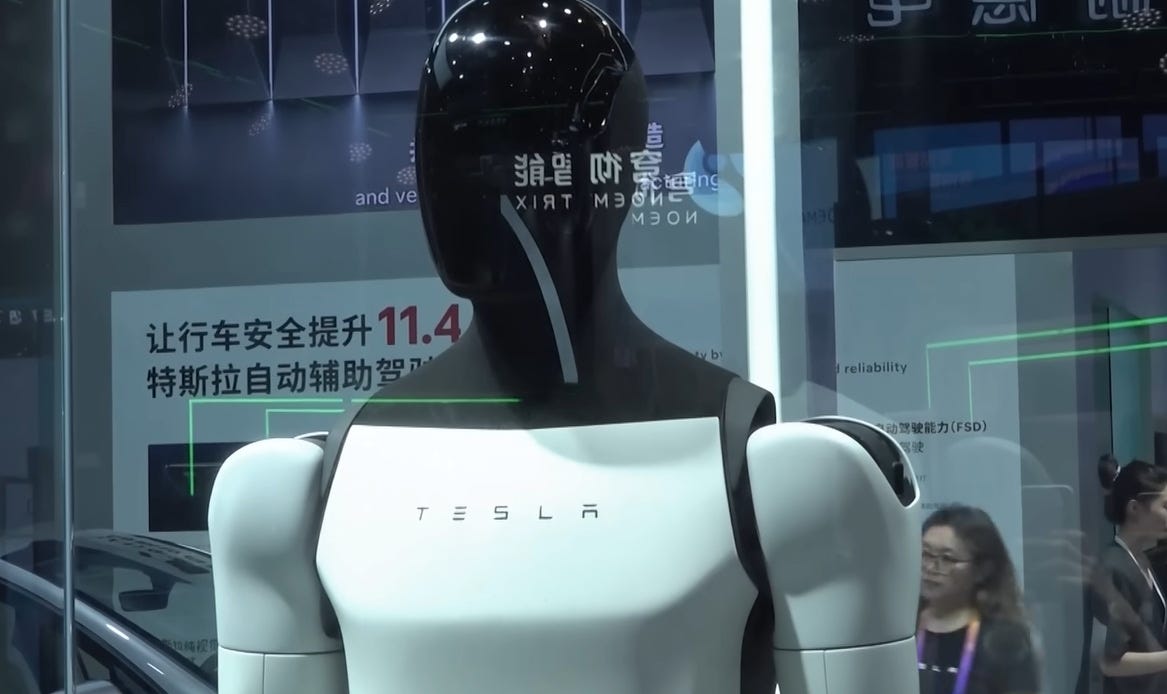



I was reminded of one Mandrake the Magician strip about robots taking over the world but Mandrake mind controls the robots’ belly buttons and saves the day.